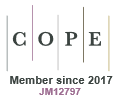Just Accepted
This article has been peer reviewed and accepted for publication. It is in production and has not been edited, so may differ from the final published form.
Three fuel models for predicting urban fire spread – a stopgap for emergency management in the US
Abstract
Background: Prevailing American wildland fire modeling systems fail to predict fire growth in urban areas due to the absence of burnable urban fuels. Aims: This research aims to identify fuel models that optimize fire spread in urban areas relative to a hypothetical fire spread model derived from observations of recent urban fires. Methods: A target Rate of Spread (RoS) is derived from observations of seven urban conflagrations to anchor the model to absolute RoS. Exhaustive parameter sweeps are used to identify combinations of fuel variables that result in optimal performance. Key Results: The target rate of fire spread is 0.81 km/hr. Parameter sweeps converge on unique sets of fuel parameters including: (1) an unconstrained custom fuel model, called BU0; (2) a custom fuel model that operates within the constraints of current US modeling systems, called BU1; and (3) a best-performing standard fuel model, which is Anderson Fuel Model 9. Conclusions & Implications: Although this approach stretches current modeling systems beyond their intended design, the resultant fuel models provide a necessary stopgap for emergency management until urban-specific fire spread models find their way into operational use.
WF24132 Accepted 11 September 2025
© CSIRO 2025



